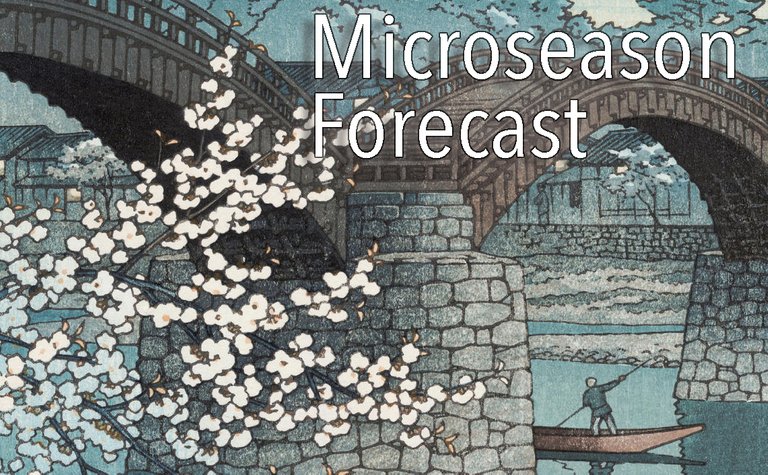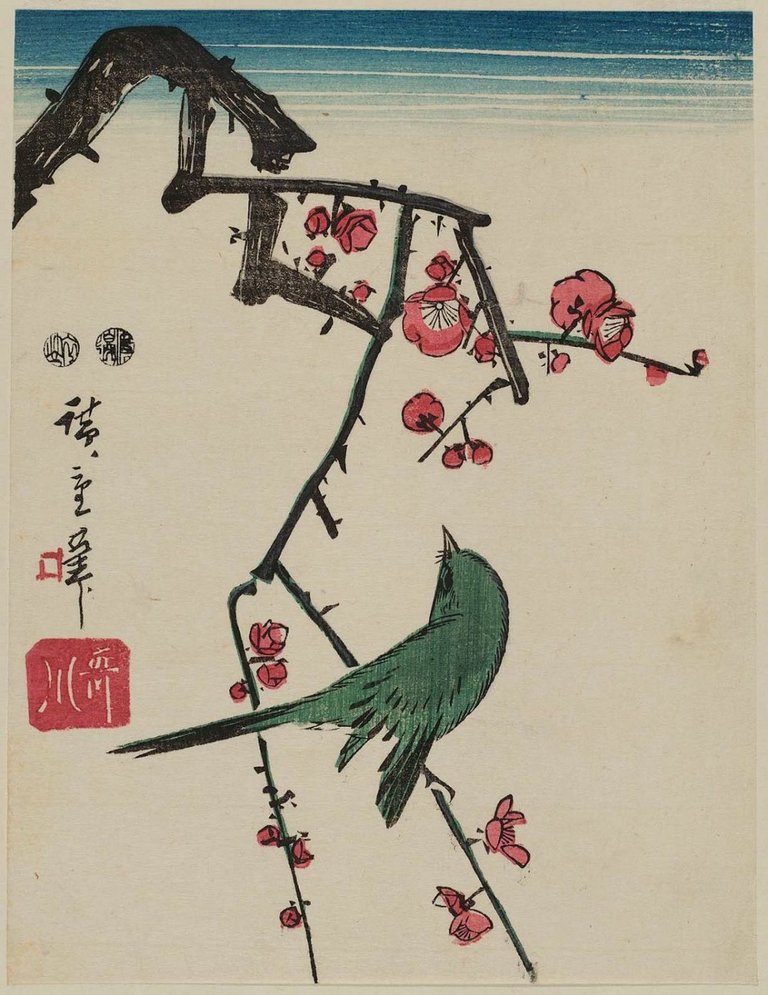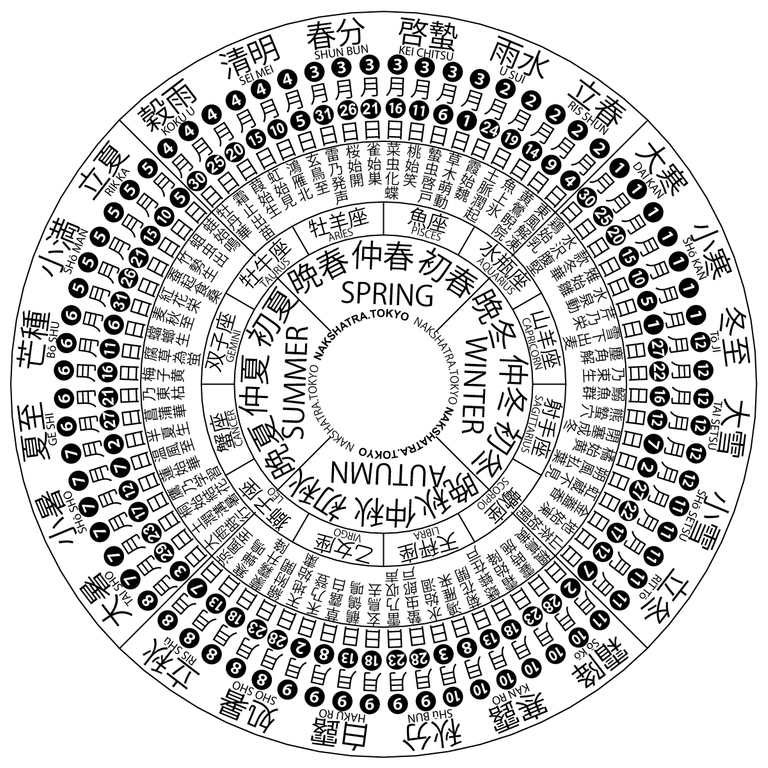
Today begins a new microseason! If this is your first time joining us, scroll down past the forecast to read about what exactly a microseason is. For the rest of you, let’s jump in!
The Current Solar Term: Risshun
The current solar term (節気, sekki) is Risshun (立春), the 1st solar term, which means Beginning of Spring. We are a third in! It started Feb 4th. We covered it last time so go read there if you want more info.
Risshun lasts until Feb 18th.
The Current Microseason: The Uguisu Starts Singing
Today, Feb 9th, begins 黄鶯睍睆, the 2nd microseason (候, kō) which is read uguisu naku and means The Uguisu Starts Singing. This is the second microseason of Risshun, which is itself the 1st solar term of spring.
Ahh this is something that all Japanese look forward to all winter: the cry of the uguisu, one of the biggest symbols of spring. There are a couple translations common for this bird, Japanese nightingale and bush-warbler being the most common. I’d favor just using the Japanese word.
More on the uguisu in a bit. Anyway, it start to be heard around now.
In addition to the uguisu, the plum blossoms are continuing to come out now. Also the herring, which is known as the spring fish, is entering its spawning season. Nature is continuing to wake up.

Seasonal Animal: Uguisu
The uguisu (鶯) is often heard more than it is seen. These days, in fact, many people have no idea what it looks like, but everyone knows its beautiful call, represented in Japanese as “hooohokekyo”. If you hear it, that will make perfect sense.
It really sounds like hoooohokekyo, doesn’t it?
The bird has been featured in Japanese poetry since the very first book of poetry, the Man’yōshū (c750) and is often linked to the ume blossoms as a harbinger of spring.
In Japanese Buddhism, it is associated with the Lotus Sutra, called hokekyō in Japanese (法華経).
The uguisu is such a huge part of Japanese culture that a great many things have been named after it. In some circles, it is said that the first person who hears the call in spring will gain great luck.

Here is a haiku for this microseason:
uguisu no nakeba naniyara natsukashiu
it fills me with
a vague nostalgia
—Onitsura
When we hear its song, not only do we feel spring is near, but we are reminded of past springs and our youth in those springs that now only exist in memory. I think Onitsura’s sentiment would be familiar to most Japanese.
uguisu is, unsurprisingly, a kigo (season word) for spring.

Will move this info to another post one of these days, but for now, briefly:
- Each month has two seasons, called solar terms (節気, sekki), giving us a total of 24 seasons. This gives the system its name, the 24 Sekki (二十四節気). I usually refer to this entire system as The Japanese Almanac. It is more than a little similar to the American Farmer’s Almanac.
- Each of these 24 seasons is further subdivided three more times, giving us a grand total of 72 seasons, or microseasons (候, kō).
- Each microseason is about 5 days. With time periods so short, they can get pretty specific about what in nature we might expect to be happening around now.
- The system was originally from China, but it was reformatted during the Edo Era (1603–1868) to fit better with Japan’s climate. I find it also fits fairly well with much of the Midwest in the Eastern half of the US. But if you live in a different area, your milage may vary.
- The entire system is based on the equinoxes and solstices, so it is fluid and the exact dates will vary by a day or two from year to year. Luckily there are a great many Japanese sources that do the astrological computations for us and tell us exactly when each one starts and ends every year.

The next microseason starts on Feb 13th. See you then for the next forecast!